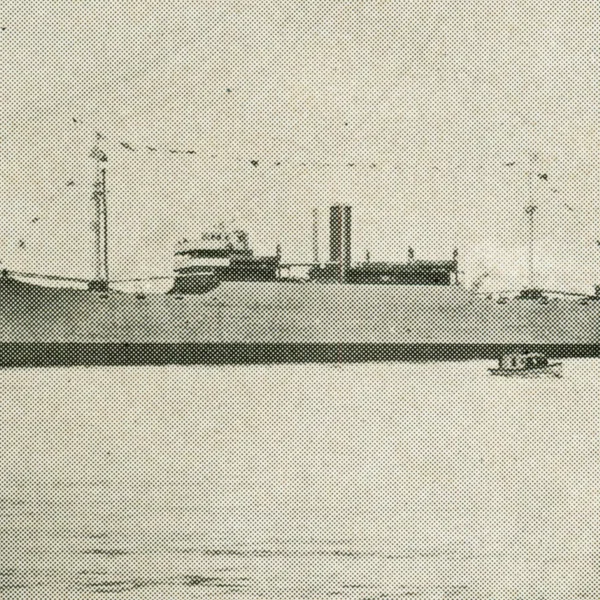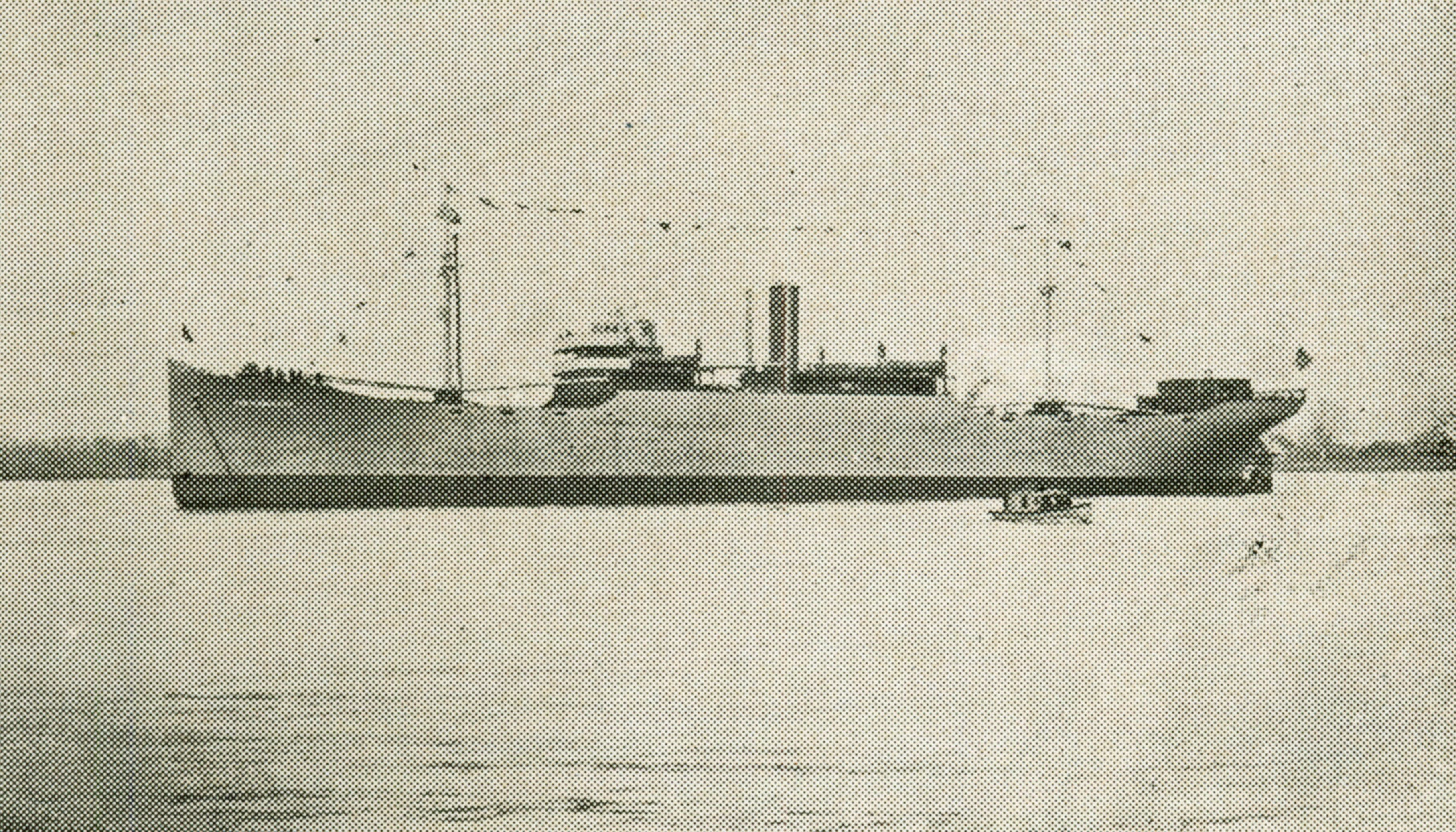At the end of World War I, Bloomington citizens were given the honor of having a freighter named for their fair city.
The trouble was that the obvious choice, “Bloomington,” was already taken. That’s why, in the end, the ship was christened “Evergreen City,” as that was the community’s longtime popular nickname (though now seldom used).
The right to name a ship came about from Bloomington’s generous participation in the Liberty Loan program, an effort involving everyday citizens purchasing government war bonds to be paid back in several years time with interest. There were five loan campaigns spaced about six months apart, and although loan totals—at least those on the national level—fell short of expectations, billions of dollars were raised to help wage and win the “War to End All Wars.”
“Evergreen City” was a direct reward for Bloomington’s success in the final—or “Victory”—Liberty Loan campaign, which got underway after the armistice and war’s end. Funds for this drive were used primarily for the demobilization of U.S. forces.
The pride and joy of Bloomington was built at the shipyards in Bristol, Penn., located about 20 miles northeast of Philadelphia. “Evergreen City” was the 27th of 40 freighters of this type built at the Delaware River shipyard.
Beginning in June 1919, The Pantagraph staged a popularity contest to pick a “young woman” to serve as Bloomington’s official representative in Bristol and smash upon the ship’s bow the obligatory bottle of bubbly. Blank ballots were printed in the newspaper, and readers were asked to vote for any female resident of Bloomington. Voters could submit multiple ballots, though each one cost ten cents (or the equivalent of about $1.40 today, adjusted for inflation). All the money raised went to Victory Hall, a planned home in Normal for disadvantaged boys (Victory Hall, at the corner of Hovey Ave. and Kingsley St., now serves as the Illinois State University Pi Kappa Alpha fraternity house).
As one would imagine, those receiving votes were mostly young women in their late teens and early twenties from upper-middle class families whose names back then often appeared in The Pantagraph’s society pages. The top vote getter, though, had a much different story.
Balloting closed Dec. 1, 1919, and the following day The Pantagraph declared Margaret Fenton the winner. Fenton, whose age was unknown but was at least in her early forties, was the beloved west side librarian to railroad workers and their families.
Of the nearly 3,000 votes cast, Fenton received 1,198, 140 more than runner-up Gertrude Bohrer, granddaughter of Gov. Joseph “Private Joe” Fifer, and daughter to Florence Fifer Bohrer, who in 1925 became the first woman to take a seat in the Illinois Senate.
“Miss Fenton is one of the best known women on the west side,” remarked The Pantagraph, “and railroad men were her chief supporters, although she received many votes from the others.”
For 25 or more years, Fenton had worked at the Chicago & Alton Library. Located on Catherine Street, the busy reading center, which was little more than a cozy wood-frame cottage, served the employees of the sprawling C&A Railroad Shops. As Bloomington’s largest employer at the time, this was a city unto itself where upwards of 1,800 or more skilled and semi-skilled workers refurbished and rebuilt steam locomotives, and maintained, repaired and repurposed rolling stock.
The little library, a stone’s throw away from the sprawling shops, offered boilermakers, steamfitters, sheet metal workers, locomotive engineers, brakemen, switchmen, clerks and many others of the C&A access to some 20 daily newspapers, 300 weekly or monthly magazines and all sorts of railway publications. The library, which was not company owned but rather funded by an independent employees’ association, also circulated about 5,000 books, a collection said to be heavy on fiction.
Fenton, though kindly and helpful, had a quiet toughness that likely appealed to her many work-hardened library patrons, with their lined, grease-grimed faces and clothes dusted with coal ash.
Thirty-four years before winning the “Evergreen City” christening contest, a young Fenton worked as a house girl for Bloomington bookbinder Amos Kemp and family (no relation to the author). That winter, January 1885, the Kemp’s cook stove exploded, grievously mangling one of Fenton’s legs, which was then amputated four inches above the knee. “She is of course crippled for life, but otherwise has entirely recovered,” The Pantagraph noted several months later. “Her affliction is a great one, but she has accepted it with remarkable fortitude and patience.”
By the mid-1890s, if not earlier, Fenton settled into her job of a lifetime—that of Bloomington’s west side railroad librarian.
Pantagraph coverage of the March 20, 1920 christening of the “Evergreen City” came courtesy of Harriet Hayden Finck, a former Bloomington resident who was president of the Pennsylvania Women’s Press Association. “At 2:50 on Saturday afternoon,” she reported, “with sun shining, the wind and tide just right, with whistles blowing and the party cheering, the big steel freight ship, ‘Evergreen City,’ was successfully launched from the Bristol shipyards.”
Fenton, wearing a smart-looking gabardine suit of dark blue with lynx furs, performed her role without a mishap.
As U.S. doughboys continued to return stateside and relief supplies were sent to war-ravaged Europe, the “Evergreen City” was put into service, making “many trips to European and Black Sea ports.” In 1934, after having been mothballed for several years, the old freighter was sold to a Texas firm. Four years after that sale, the ship was believed to be serving as a stationary oil platform in Terrebonne Bay on the southern coast of Louisiana. One supposes it was eventually sent to the bottom of the bay or sold for scrap.
But what of Margaret Fenton, who, truth be told, has become the more interesting of the intertwined stories?
She continued to work at the library until the summer of 1926 when the wood-frame building was moved and repurposed during an expansion of the railroad shops. “The Chicago & Alton Library was for a half-century one of the best known institutions of the west side,” observed The Pantagraph around the time of its closing.
Fenton then succumbed to cancer in early 1927, passing away at the Aurora, Ill., home of her brother John. A member of Holy Trinity Catholic Church, she was laid to rest on Jan. 10 at St. Mary’s Cemetery on Bloomington’s west side. “The funeral was well attended,” reported The Pantagraph, “especially by Chicago & Alton employees.”

